Artists invite their audiences into conversation. A piece of music, a photograph, a painting—each is a personal statement created to connect emotionally or intellectually with listeners and viewers. These expressions and the methods used to create them are shaped by lived experiences, some painful and difficult to endure.
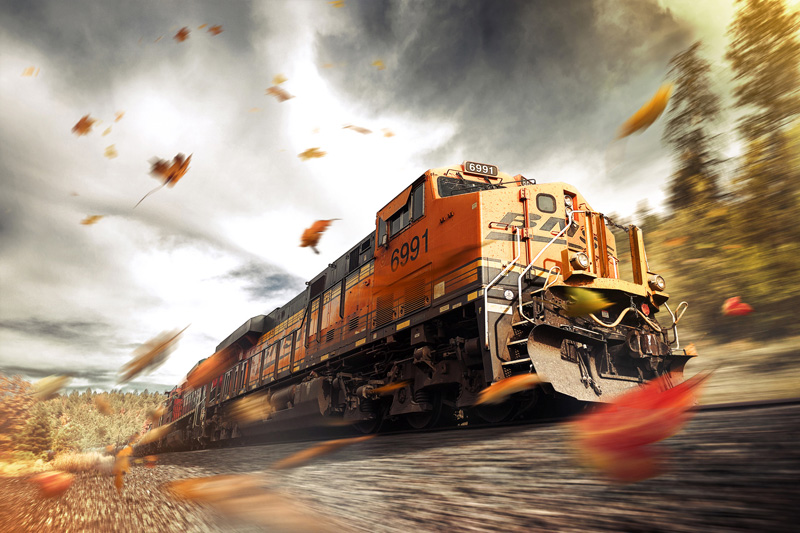
Freight train outside Flagstaff, Arizona by Blair Bunting
Laura Nadine, Blair Bunting, and Stuart Neilson are artists with autism who engage with and change the world around them through three distinct voices. For each, art is a language they have learned to embrace and trust.
Nadine, a violinist, composer, and music educator born in Atlanta and living in Toronto, often prefers to let her instrument do the talking. “It is something that speaks when I can’t,” she said. “I get very frustrated trying to explain things to people, expressing my needs, expressing my emotions. Things can get very complicated just trying to find words to communicate with others. But with music, it never fails. If I want the audience to laugh, they laugh. If I want them to cry, they cry. It just never fails.”
“I remember the time I figured this out about the audience,” she continued. “I’d only been playing maybe a year. I was playing the piece ‘Humoresque,’ a well-known piece by Dvořák. I looked out at the audience and noticed that if I did something humorous, they would laugh out loud. When I hit the peak of the song, where it was deeply emotional, I could see that people had wet eyes, and I remember taking that in and going, ‘Wow, this is really cool.’”
Nadine considers that connection her goal. “There’s an energy that changes in the room,” she said. “You can almost tell when everyone is vibing on the same frequency. Anytime I’m performing, that’s what I’m looking to do—I’m taking in the context, I’m taking in the energy of the room, and I’m trying to meld us together so we’re in this constant state of flow.”

Laura Nadine performing at the 2023 First Place Global Symposium. Photo credit: Good Eye! Media
Blair Bunting, an internationally acclaimed commercial photographer who makes his home in the mountains of Flagstaff, Arizona, discovered the communicative power of his pictures in high school. A reserved teenager who wanted to relate with others his age, he struggled internally with conversation. “I just crawled in my skin,” he said. “I never had an easy time connecting with people because my personality was probably a little different. It was that shy guy trying to overcompensate. It was grueling.”
All of that changed with the click of a camera—a 1972 Nikon F his father gave him that Bunting still uses today. “Picking up the camera and making art with it was a way of starting conversations that I wanted to talk about or that I was comfortable expressing,” he said. “I would make pictures and could go to a person and show them.”
Bunting reflected on this further: “You know, a picture is worth a thousand words, and those were words that I wanted to convey. Until I started creating images, I wasn’t able to.”
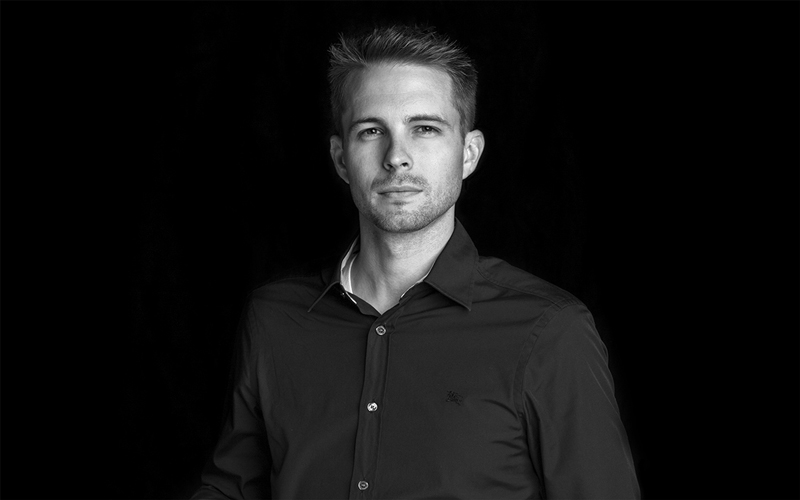
Blair Bunting in studio. Self-portrait. Photo credit: Paul Morton
Stuart Neilson communicates through pictures, too. He picked up his first camera as a child when his family lived in Ethiopia. Back then, it was a Kodak Instamatic; the subjects were the surrounding landscapes and wildlife. In his 50s, as a college professor with a PhD in statistics in Cork City, Ireland, he began using a digital single-lens reflex camera to open up and deliver a personal message to his class. He was experimenting with ways to show students how difficult normal, everyday life was for him as an adult with autism.
Neilson struggles with busy public spaces. Navigating the flow of pedestrian traffic and physical amenities is difficult and often prevents him from completing the most mundane tasks. Walking into his local market and buying a loaf of bread can be overwhelming.
“I was teaching disability studies and started photographing places that I was finding difficult to get into or to find my way around,” said Neilson. He started using stop motion photography and heat maps to identify the patterns and intensity of movement, revealing potential sensory refuges for him and others.
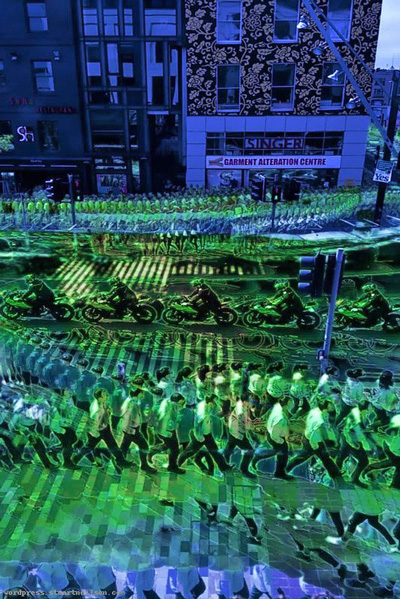
Photographic study of public space by Stuart Neilson.
“I’m trying to photograph things that are really unremarkable to most people,” said Neilson. “How to walk into a shop, something people do hundreds of times in a week. And I’m saying, ‘This is hard,’ and they’re doing it all the time, and they can’t see why it’s hard.”
In the process of conducting these photographic studies, Neilson is creating beautiful compositions: “They end up looking very abstract. Something that’s really dull and boring becomes an abstract piece of art.”
Fully knowing oneself is important to fully expressing oneself. And while they began to explore their art early in life, it was years later that Nadine, Bunting, and Neilson discovered they were living with autism. Nadine was in her late 20s, around the same time her son was diagnosed. Bunting was almost 40, well into his struggles with panic disorder. After experiencing the stigma of being labeled “educationally subnormal” as a child and living through in-patient psychiatric care, Neilson was diagnosed at 45. His son is also autistic.
For all three, awareness brought clarity—and a greater sense of purpose.
As a music educator, Nadine teaches children with disabilities how to discover and amplify their own voices through music. Determined to create an impact that carries like a long, sustaining note on her violin, she also teaches other educators how to make music more accessible to students with greater support needs.

Laura Nadine, the music educator. Self-portrait.
More than anything, Nadine wants young musicians to believe in themselves—regardless of perceived ability. There is hard-earned strength in her words when she says, “I love music. I have managed to make a living doing nothing else. I think it’s important. And I think it’s important for people to understand that you don’t have to be Taylor Swift to make a living at it. My teaching is the arts, my performing is the arts, my writing is the arts. I am self-made from my own artistic vision. I think people should hear that so kids coming up now aren’t dissuaded.”
Bunting, a highly sought-after photographer who has shot all over the world for brands like Nike, Chevrolet, the Discovery Channel, the NBA, ESPN, and Sports Illustrated, suddenly realized why he would retreat to his hotel room after a day of shooting celebrities and break down crying. The reasons for years of social anxiety were finally coming into focus.
That newfound understanding allowed him to become more present on set and more attentive to the people around him. “It was kind of a call to action to talk to people about it because I knew that it was a private struggle for me to get through,” said Bunting. “So I talked to more people about it, finding out more about what was happening. I talk to others who live with it, too, so they don’t feel alone.”
Coming to terms with who he is also gave Bunting the mindset to tackle the unimaginable. Two years ago, he was given the opportunity by the U.S. Department of Defense to photograph Earth and an accompanying Lockheed U2 spy plane—from the edge of space. In April 2023, he spent five hours capturing images no other professional photographer had ever seen through a viewfinder. As a tribute to his father, he used the Nikkor 50mm lens from his original Nikon F. Many of those images were first displayed at the 2023 First Place Global Symposium in Phoenix, Arizona. Some are destined for display at the Smithsonian National Air and Space Museum in Washington, D.C.
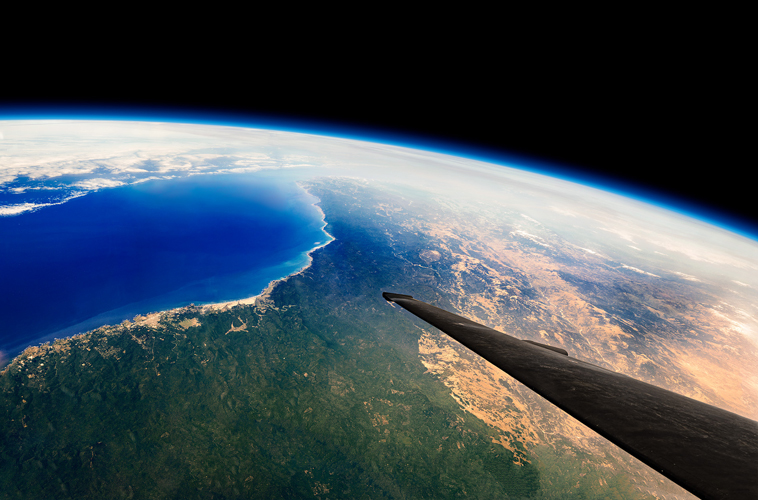
Image from the edge of space by Blair Bunting.
Neilson’s life also took on a new trajectory. In 2017, he left his teaching position and now focuses on his imaging and studies of public spaces. His statistical background and lifelong passion for photography have converged to form a single language he hopes will help shape a more inclusive future.
“I use statistics to identify what I assume has the biggest visual impact,” said Neilson as he explained his refined technique. “The way I am combining the frames is using the statistical technique of finding the minima and the maxima. Finding the one most different from the average—that’s the bit that ends up in the composite.”
Neilson’s camera has also had another impact. “The camera is like looking through a shield with a hole in it,” he said. “I feel safe behind a camera. I’m not feeling the stress while I’m doing it. I take pictures of people walking and using pedestrian crossings in the busy city center. It’s not a place I’d sit down on my own, but when I have the camera there, I feel a sense of comfort.”
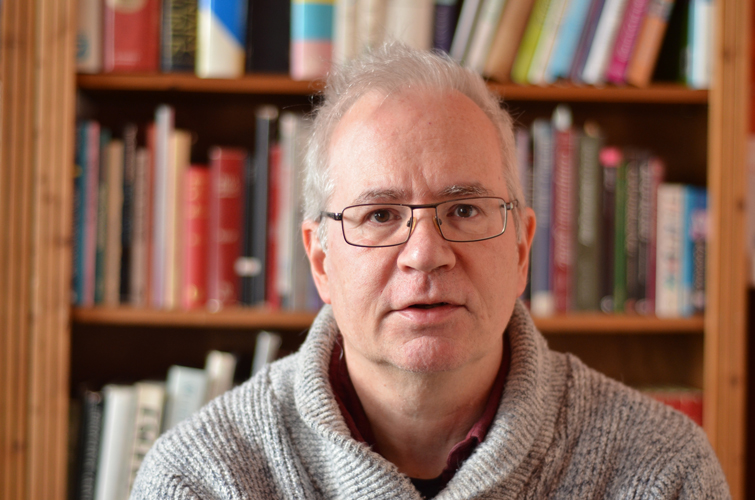
Stuart Neilson in his Cork City, Ireland home. Photo credit: Chryssa Dislis
This is something he shares with Bunting, who also escapes behind the camera. “The camera is a state of mind,” said Bunting. “On set, it’s my comfort zone. As my daughter would call it, my safety blanket. It lets me be a little bit more expressive and comfortable—not only with the situation around me but with who I am.”
Bunting also finds refuge along the train tracks near his Flagstaff home. In the award-winning 2023 documentary “Sound Tracks” that features him and Nadine, he explained, “I’m out here [the train tracks] because it’s peaceful; it allows me to breathe a little bit better.” When he’s not photographing priceless car collections or world-class athletes, he’s watching and shooting freight trains two to three days a week for up to three hours at a time. “I take seven or eight cameras, different ones, to the tracks, depending on how I feel that day,” he said. Many of these images were also part of his 2023 Symposium exhibit.
From the tracks and the sets, from the classrooms and the performance halls, from the bustling city center and markets of Cork City, the conversations continue. Laura Nadine, Blair Bunting, and Stuart Neilson are expressing their true selves—through music, photography, and purposeful living.
Nadine provides the perfect coda: “If you want me to put together a resume that expresses who I am, it’s going to be very shortsighted. If you let me put together a musical piece that expresses who I am, you’ll get to know me much better.”
Laura Nadine, Blair Bunting, and Stuart Neilson will be participating in the 2024 First Place Global Symposium, October 16–18, in Phoenix, Arizona.
Tom Ortega is Director of the Mulzet Center for Expression at the First Place Global Leadership Institute. He is an artist and a community activist living in Phoenix. He can be reached by email at tom@firstplaceaz.org or via phone at 602-502-9354.








[…] also “Three Artists with Autism. Three Voices with Purpose: Laura Nadine, Blair Bunting, and Stuart Neilso…” by Tom Ortega, Director of the Mulzet Center for Expression at the First Place Global […]